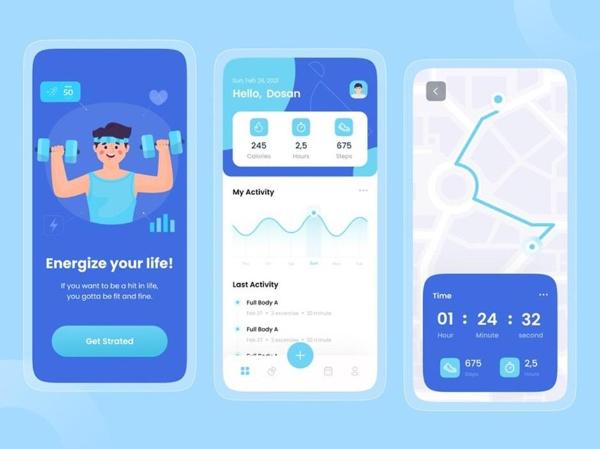Wearable Apps for Health and Fitness: Investigating Their Future Potential
Recently, popular wearable applications have changed how we track our health and fitness objectives. These applications, intended for smartwatches and fitness trackers, provide several features to help people live healthier and more active lifestyles. This article will address wearable apps' advantages, market growth, prospective uses, difficulties, and solutions in the health and fitness business.
What does "wearable apps" mean?
Wearable apps are built for smartwatches, fitness bands, and other linked gadgets. These applications gather and analyze health and fitness data using wearable device sensors. They help users track and improve their health using real-time data, tailored insights, and interactive features.
The function of wearable applications
Wearable applications measure heart rate, sleep habits, steps, distance, and calories burnt using sensors in wearable devices. App users get health and fitness insights and feedback from data processing and analysis. Data visualization gives wearable app users an easy way to track their progress.
Health and Fitness Benefits of Wearable Apps
Health and fitness enthusiasts benefit from wearable applications. Consider some main benefits:
- Live Tracking
Wearable apps offer real-time health and fitness tracking, helping users adjust habits and identify goal-oriented patterns for improved decision-making.
- Personalized Coaching
These apps offer tailored training and insights, using user data for safe, effective exercise regimes.
- Motivation and Accountability
Gamification, social features, and community support in these apps encourage health-focused behavior and competition.
How to Choose a Health and Fitness Wearable App Development Company
Your health and fitness app's success depends on choosing the correct wearable app developer. Consider these aspects while choosing a healthcare app development:
- Teamwork and Communication: Choose a developer with open communication, regular updates, and collaborative decision-making, supported by a project manager and a clear communication plan.
- Post-Development Support: Look for ongoing support after launch, including problem-solving, updates, and technical assistance.
- Client Feedback: Check the company's reputation and work quality through client reviews and references, focusing on their experience, satisfaction, and the company's reliability and professionalism.
- Teamwork and Open Communication: Select a development business that values open communication, regular updates, and includes you in decision-making. A dedicated project manager and a clear communication strategy are essential for timely project delivery.
- Post-Development Support: Choose a provider that offers ongoing support and maintenance. This should include problem resolution, updates, and technical assistance post-launch. A reliable partner will assist in updating and enhancing the app as technology and user needs evolve.
- Client Feedback: Evaluate the company's reputation and work quality through customer references and reviews. Inquire about their experience and satisfaction with both the development process and the final product, gaining insights into the company's reliability, professionalism, and adherence to deadlines.
Select a fitness app development agency company that aligns with your health and fitness app goals by considering these factors and conducting thorough research.
Conclusion
Wearable apps monitor health, offer personalized coaching, and foster community interaction. Success depends on cost, interface, and privacy. Focusing on affordability, user-friendliness, security, and integration can maximize their potential. These apps, evolving with technology, raise health awareness and have a promising future. They can transform health management, behavior, and overall well-being through real-time tracking, tailored guidance, and social engagement.

